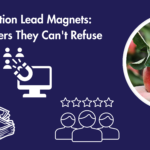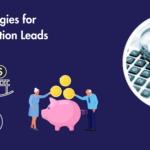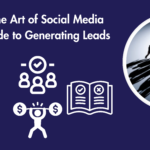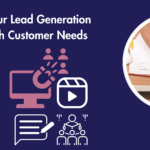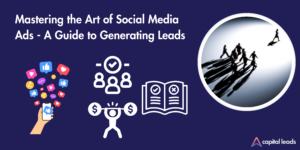What is Lead Velocity Rate(LVR)?
Lead Velocity Rate (LVR) is a metric that measures the month-over-month growth of qualified leads for your business. In other words, it’s the percentage increase in new potential customers that show real interest in your product or service, compared to the previous month.
It’s a way to track how many more potential customers you have now than you did last month, without getting bogged down in the actual numbers of leads.
It’s a real-time indicator of your business growth and sales momentum. Unlike revenue, which can be affected by various factors and can reflect past activities, LVR shows you what’s happening right now with your incoming leads.
The Difference Between LVR and Other Sales Metrics

LVR vs. Sales Revenue
Sales revenue is the total amount of money that’s coming into your business from sales over a certain period. LVR, on the other hand, isn’t about money; it’s about the pace at which you’re getting new potential customers. While revenue tells you “how much” you made, LVR tells you “how fast” your pool of potential new customers is growing.
LVR vs. Conversion Rate
Conversion rate measures how many of your leads are turning into customers. If you’re looking at conversion rates, you’re focusing on effectiveness—what percentage of the people interested in your product actually end up buying it. LVR doesn’t care about the “who buys,” just the speed of “how many might buy” by looking at the increase of leads.
LVR vs. Customer Acquisition Cost (CAC)
CAC is all about how much you spend to get a new customer. It’s a cost-focused metric, telling you if you’re spending too much (or too little) to gain one customer. LVR doesn’t deal with costs or spending. It’s purely about growth in potential customers, not the price tag of getting them.
LVR vs. Customer Lifetime Value (CLV)
CLV predicts the total value your business can expect from a single customer throughout their relationship with your company. It’s a long-term view, while LVR is a snapshot of growth from
one month to the next. CLV is about the long haul revenue potential, and LVR is about the fresh interest in your offerings.
LVR vs. Monthly Recurring Revenue (MRR)
MRR is about steady income, usually from subscriptions or ongoing services, that you can count on every month. It’s a consistent, predictable metric. LVR is not about the money in hand but about potential future MRR since it’s showing how many new leads could turn into recurring customers.
Why Lead Velocity Rate is Important for Your Business?
Lead Velocity Rate (LVR) is super important for your business because it’s like the pulse of your company’s growth potential. It’s a clear-cut metric that tells you if you’re attracting more potential customers this month compared to last month.
And that’s crucial because more leads today set the stage for more sales tomorrow.
Think of LVR as the growth engine of your business. It’s not distracted by the actual sales closed or the revenue made; it just focuses on whether more people are showing a real interest in what you’re selling.
And since it’s all about qualified leads—those most likely to buy—it’s a solid indicator of future success. A healthy LVR means your marketing is hitting the mark, and there’s a likely increase in cash flow on the horizon.
Another big plus? LVR doesn’t swing wildly with seasonal trends or one-off sales. It’s consistent. You can rely on what it’s telling you about the month-to-month health of your business.
This makes LVR a trustworthy metric for planning ahead. You can better forecast future sales, manage inventory, and decide where to spend on marketing.
LVR is vital for strategic growth because it provides a real-time snapshot of whether your business is gaining speed or needs a push.
How to Calculate Lead Velocity Rate?
To calculate it, you take the number of new qualified leads you have in the current month and subtract the number of new qualified leads from the previous month. Then, divide that number by the previous month’s total and multiply by 100 to get a percentage.
For example, if you had 100 qualified leads last month and this month you have 120, your LVR would be:
(120 – 100) / 100 * 100 = 20%
That means your Lead Velocity Rate is 20% for this month, signalling good growth.
High LVR is a sign that your marketing is effective and your market presence is expanding. It’s a critical number to track regularly for any business focused on growth.
Diagnosing Your Lead Velocity Health

Key indicators of a healthy Lead Velocity Rate (LVR) reflect a strong and growing interest in your business. Here’s what to look for to ensure your LVR is telling you good things:
Consistent Growth
A healthy LVR should show consistent growth in the number of qualified leads from one month to the next. Small fluctuations are normal, but the overall trend should be upward.
Quality Over Quantity
Not just any leads, but high-quality, qualified leads that are more likely to turn into customers. An increase in these types of leads is a positive sign.
Alignment with Marketing Activities
When you ramp up marketing efforts, a corresponding increase in LVR would indicate those activities are effective. This alignment shows you’re not just shouting into the void — people are listening and interested.
Sustainable Pace
Growth that’s too rapid can be as concerning as no growth. It needs to be at a pace you can handle. If your LVR spikes suddenly, make sure your team can manage the new leads without compromising the quality of customer engagement.
Balance with Conversion Rates
While it’s great to have a high LVR, it should be in balance with a stable or increasing conversion rate. This ensures that the rise in leads isn’t just a number, but is translating into actual business.
Common Issues That Lead to a Poor LVR

Ineffective Marketing
If your marketing efforts aren’t hitting the mark, they won’t generate the interest you need. This could be due to outdated strategies, poor-quality content, or messaging that doesn’t resonate with your target audience.
Neglected Lead Qualification
Not every lead is a good lead. If you’re not properly qualifying leads, you might be attracting lots of interest, but not from prospects likely to make a purchase. Good lead qualification ensures that efforts are focused on nurturing the right leads.
Weak Sales Pipeline
A pipeline that’s not managed well can lead to leads slipping through the cracks. If leads aren’t nurtured and moved through the sales process effectively, they won’t convert, and your LVR will suffer.
Lack of Follow-Up
Quick and consistent follow-up is key to keeping leads warm. If your sales team is slow to respond, interest can cool off fast, leading to a drop in potential conversions and a poor LVR.
Market Saturation or Changes
Sometimes the issue is bigger than your business. If the market is saturated or consumer preferences have shifted, it can lead to a reduced number of qualified leads.
Limited Brand Awareness
If your brand isn’t well-known or trusted, it can limit the number of new leads. Building a strong brand presence is vital to attracting new interest.
Technology and Tools
Not having the right tools or technology to capture and track leads can also lead to a poor LVR. Efficient CRM systems and analytics are crucial for understanding and optimising your lead generation process.
Poor Customer Experience
If the customer experience is lacking, whether on your website, in person, or through customer service, word gets around. A bad reputation can deter potential leads from engaging with your business.
Inadequate Training or Resources
Your sales team needs the right training and resources to convert leads. Without it, even the best marketing efforts can fall flat.
Strategies to Boost Your Lead Velocity

Boosting your Lead Velocity Rate (LVR) is about attracting more qualified leads faster and more efficiently. Here are some strategies to help give your LVR a healthy lift:
Refine Your Targeting
To improve your LVR, start by sharpening your targeting. Make sure you’re aiming your marketing efforts at the right demographic. Use data analytics to understand who your best customers are and why they choose you. Then tailor your marketing to attract similar prospects. This means adjusting your campaigns to align with their interests, behaviours, and needs.
Optimise Your Marketing Channels
Not all marketing channels are equal. Analyse which ones bring in the best leads and focus your efforts there. This could mean tweaking your SEO strategy for better online visibility, doubling down on social media if that’s where your audience hangs out, or investing more in email marketing if it’s yielding results. The goal is to be where your potential customers are and to make a strong impact.
Improve Lead Qualification
A pile of leads means nothing if they’re not the right fit. Use lead scoring systems to rank prospects based on how well they match your ideal customer profile. The better you are at qualifying leads, the more efficient your sales process will be, and the quicker your LVR will grow.
Enhance Your Content Strategy
Content is king in the digital age. High-quality, valuable content can attract more qualified leads. Blog posts, whitepapers, e-books, and videos that help solve problems or answer questions can pull in prospects who are more likely to be interested in what you offer. Make sure your content is optimised for search engines to increase its reach.
Leverage Technology and Automation
Tools like Customer Relationship Management (CRM) software and marketing automation platforms can streamline your lead generation and nurturing processes. They can help you capture leads more effectively, nurture them with less manual effort, and give you insights into what’s working and what’s not.
Train Your Sales Team
A well-trained sales team is crucial. They should know how to quickly follow up on leads, communicate value effectively, and move leads through the sales pipeline efficiently. Regular training and a clear understanding of the sales process will ensure no lead is wasted.
Conclusion
Maintaining and boosting your Lead Velocity Rate (LVR) is not a one-and-done task; it’s a continuous effort that requires attention and agility. Think of LVR as a garden—it needs regular tending to thrive.
You have to plant the right seeds (generate leads), water and nurture them (engage and qualify leads), and keep the soil fertile (optimise strategies) for a bountiful harvest (sales).
With a track record of propelling large growth companies forward, we at Capital Leads specialise in generating top-quality, data-validated leads. Our mastery of multi-platform lead generation ensures that your business reaches its full potential in the solar, home improvement, and financial sectors.
We don’t just understand lead generation; we cultivate excellence in it on all fronts.
Ready to rev up your sales engine? Swing by Capital Leads to learn how we can power up your lead generation. Or, if you’re eager to kick things into high gear, jump straight to Capital Leads – and begin your journey to more and better leads today. Let’s drive your business forward, together.

